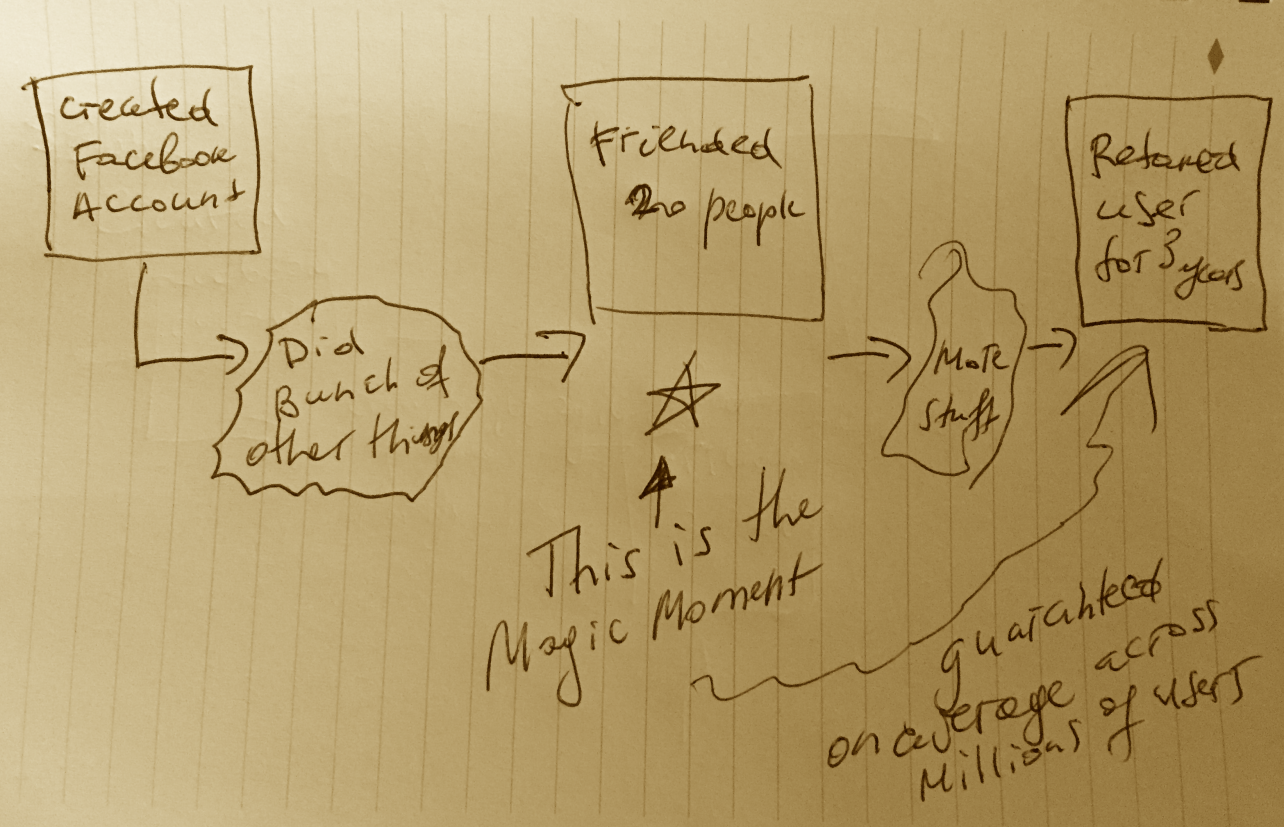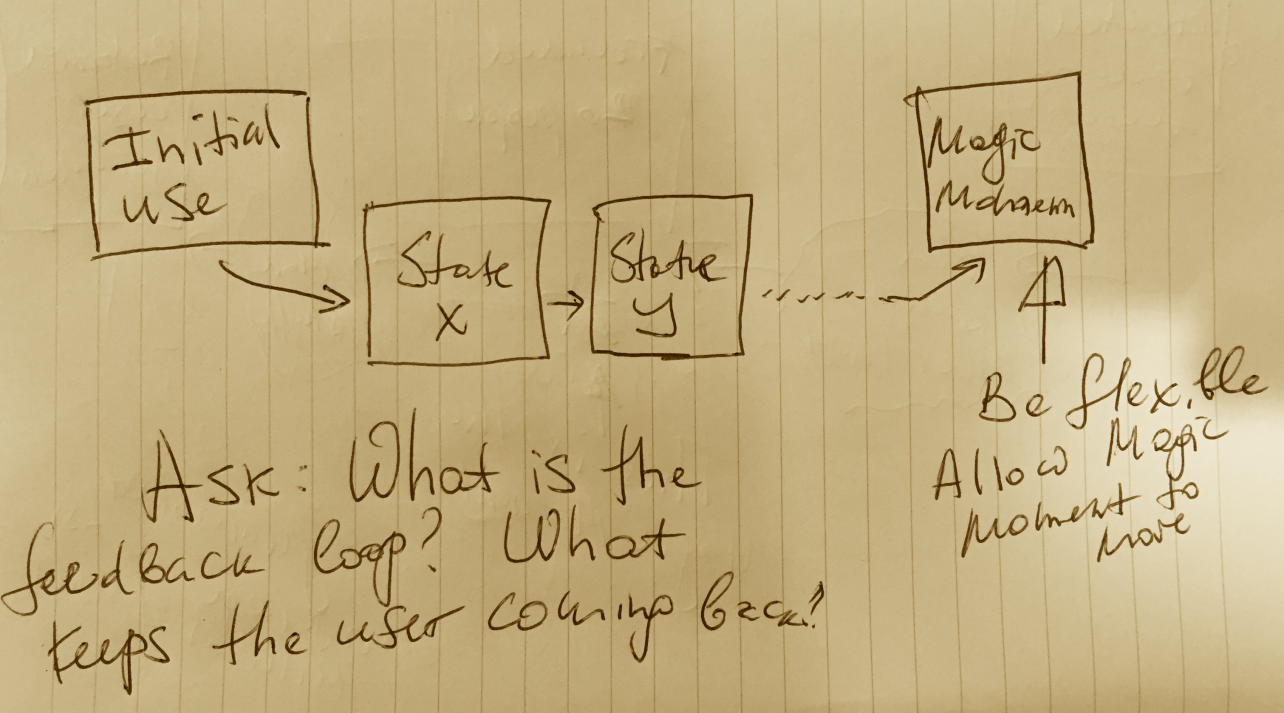
Early on, after Facebook launched its Feed feature, the product team at Facebook was trying to understand how to engage and retain users. What the product team noticed is that IF a user got to 10 or more friends in 14 days, there was very high likelihood of this user would stick around for a while.
The team had a hypothesis that 10 friends collectively generated enough interesting activity to populate the user’s feed and keep him or her coming back. For Facebook, 10 friends has literally become a magic number, because, while the exact mechanism behind it isn’t clear, users with 10 or more friends didn’t churn after 14 days.
CAC vs. LTV
Before we dive into the Magic Moment and why it is important, we need to talk about two other concepts—the Cost of Customer/User Acquisition (CAC) and the Life-Time Value (LTV) of a customer/user.
In very simple terms, CAC is related to the costs of acquiring a customer, and LTV is related to the profit a business can make per customer.
To build a viable business, a startup needs to prove that it can acquire customers as inexpensively as possible and retain them for as long as possible.
There is a set of formulas and calculations that establish what a business must do to be attractive. For example, it is important to pay back CAC within 12 months, and the LTV needs to be at least three times that of CAC. Read this awesome post by David Skok to understand the details of these calculations:
“Things get tricky quickly though, because not only do you need to acquire customers, you need to retain a lot of customers.”
Many startups are able to sign up users but not retain them because the product isn’t compelling or sticky enough. Customers sign up, but quickly churn. In this situation, Life-Time Value of the customer is too small to offset the cost of acquiring the customer. So the business can’t be profitable, and it can’t survive.
The Magic Moment
The “Magic Moment” helps solve for business sustainability.
Here is how you can think about it: A customer performs a sequence of actions from signing up to using the product in various ways. Each combination of actions defines a path, and puts the customer into a specific state.
The Magic Moment is a very special state—once a customer reaches that state, the probability of the customer churning in the future is dramatically lower. To put it differently:
An average customer that hits the Magic Moment will stay a customer for a long time, will have high LTV, and will be profitable for the business.
If this seems like a backwards definition, it really is.
The idea is to work BACKWARDS from the desired state— a RETAINED, LONG-TIME, HIGH-LTV CUSTOMER, and to understand the path to get there.
Take a look at the diagram above. In the case of Facebook, a user would sign up, then do a whole bunch of things, and then eventually, within 14 days, get to 10 friends. That happens to be a Magic Moment for Facebook, because an average user who makes 10 friends in 14 days does not churn for, say, three years. Getting users to friend 20 people guarantees a viable business for Facebook.
Next, let’s consider Netflix. If a user signs up, but doesn’t watch any movies, sooner or later she will cancel the service and churn. We can guess that for Netflix, the Magic Moment has to be a function of number of movies watched per unit of time. For example, if the user watches at least one movie a month for 3 months, he or she will stay with the service for two or more years.
Magic Moments apply equally to all kinds of businesses, including Enterprise Software. For B2B, the Magic Moments are a lot more complicated. A sale is just a prerequisite to a Magic Moment, but it doesn’t guarantee it. For example, if a company buys a security solution, but doesn’t see clear ROI, it will likely cancel the subscription. Ongoing usage and utility are requirements for non-churn in B2B, and should be factored into the Magic Moment.
How to get to YOUR Magic Moment
The trick to finding YOUR Magic Moment is to have a hypothesis of what it is that gets the customers hooked, and will keep them hooked.
To figure it out, you need to be kind of like a scientist in the lab—have an intuition of where you want to get to, but be flexible on how you get there.
Start by building the minimum funnel, where each state progressively gets the customer to what you believe will be the Magic Moment state. Think hard about why you believe this state is the Magic Moment. Figure out why the customer would keep coming back. What is the feedback loop?
Secondly, think about the funnel over specific period of time. For Facebook, 14 days or two weeks was the time needed to reach 10 friends. What is the right period of time for you? For most services, because the customer’s attention span is so short, the first few moments, first day and first week of usage are critical. If the customer is not activated, they aren’t likely to be retained.
After you build your funnel, keep measuring and analyzing it. There is no way to know for sure until you get enough data on your Magic Moment, on the path to it, and on the overall churn. Once you have the data, you should be able to, through the process of experimentation and refinement, to get to the Magic Moment for YOUR business.
Once you figure out what the Magic Moment is, you then need to figure out how to optimize the funnel that gets every single customer to that state. You do that with a set of nudges that moves each customer through the funnel, directing them to take specific actions, until they reach the Magic Moment.
Remember how Facebook kept telling us to find 10 friends, and kept suggesting friends? It was nudging us towards the Magic Moment. Alex Schultz, VP of Growth at Facebook recounts the whole journey of figuring out the Magic Moment in this awesome talk he gave at YC a few years back.
Facebook surely figured it out, and now it is your turn to decide what makes sense for your product and your business.
What is YOUR Magic Moment? How will you get your customers there?
p.s. Special thank you to Laurence Ion for pointing out bugs and inaccuracies in the original post and helping fix them.
Image Credit: CC by Bernard Goldbach




